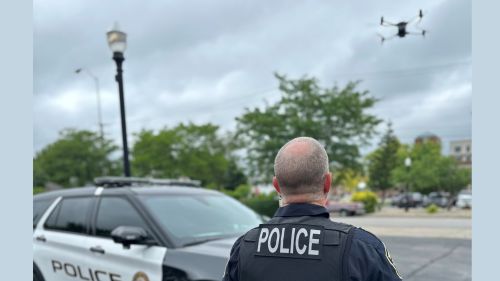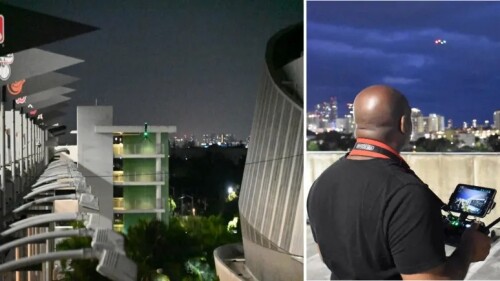Drone as a First Responder (DFR) has made its mark over the past years but never like it is now. Starting in 2018 with the Chula Vista, California, Police Department, DFR introduced a new way of having drones launch the moment a 911 call comes in, reaching the scene within minutes — often before ground units — and providing real-time situational awareness.
The results from DFR programs across the United States have been remarkable. On average, DFR has returned ground units to service in 25% of responses before they arrived on scene. This alone frees up patrol units to respond to other calls. DFR has repeatedly demonstrated that it enhances safety for all involved, improves operational effectiveness with better information and delivers real-time situational intelligence.
Surprisingly — and as quoted by Chula Vista Police Chief Roxana Kennedy — “DFR has become one of our best de-escalation tools.” The ability to verify reports of weapons or threats has changed officer approaches in ways that prevented tragic outcomes. In many cases, what was initially reported as a gun turned out to be inaccurate, leading to safer responses.
| NEXT: Advancing DFR: How to launch, scale and optimize a Drone as First Responder program
One example: A vehicle fire was reported on Interstate 5, typically CHP’s jurisdiction. Multiple conflicting reports made it difficult to pinpoint the exact location. Chula Vista’s DFR drone quickly located the fire, and because of the intensity, Chula Vista officers also responded. A widely viewed YouTube video shows the DFR drone locating the incident, then transitions to officer body camera footage. Officers arrived to find a person trapped in the burning vehicle, broke a window and pulled the person out just as the vehicle became fully engulfed. There was not a second to spare — DFR saved a life.
From 2018 to 2024, the Federal Aviation Administration (FAA) approved just over 50 DFR waivers due to the complexity of the process. These waivers often took 11 or more months and required both a remote pilot and a human visual observer, usually stationed on a rooftop. The dual staffing requirement and operational limitations in extreme weather made DFR cost-prohibitive for many agencies.
| RELATED: Navigating the latest FAA drone regulation updates for public safety
The present
After months of collaboration between the FAA, the DRONERESPONDERS DFR Working Group and industry stakeholders, a major breakthrough occurred. New safety data showing minimal risk of collisions with general aviation aircraft, combined with enhanced requirements like parachutes, anti-collision lighting and detection technology, led the FAA to simplify the waiver process. The new Certificate of Waiver (COW) process now allows agencies to use technology in place of a human visual observer — an essential change.
As of June 11, 2025, the FAA reported 300 DFR waiver submissions under the new process. Of those, 214 were approved and 78 were pending. Among the pending, 58 required action by the agency (due to incomplete or illegible submissions), while 20 needed further review of requested systems or special provisions. On average, these waivers have been approved within one week.
Breakdown of submissions:
- 87% are for below-200 feet shielded operations
- 13% propose detect-and-avoid (DAA) systems and operations up to 400 feet
More than 20 waivers have been submitted in a single day, and some have been approved in under two hours. From months to hours — this is a seismic shift. The increase in approvals has been sixfold. An incredible step forward by the FAA.
DFR waivers are saving lives, making incidents safer, solving crimes, locating suspects on rooftops, finding missing persons, preventing ambushes and de-escalating high-risk calls. The year 2025 will be remembered as the moment when DFR moved into the mainstream. Program growth is accelerating, and DFR is being recognized as one of the most impactful technology innovations in policing in decades.
| RELATED: The dawn of DFR 2.0: Elk Grove PD flies into the future
Access the DFR COW guideline documents here.
Looking to the future
Advancements coming for DFR include:
- Beyond Visual Line of Sight (BVLOS) autonomous flights
- One remote pilot operating multiple aircraft
- Integration of artificial intelligence (AI)










